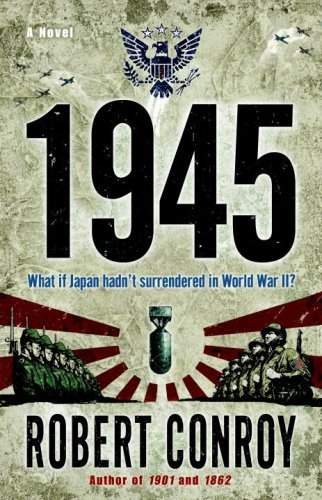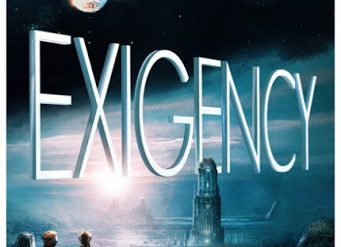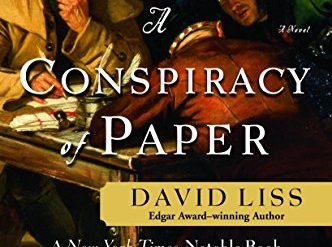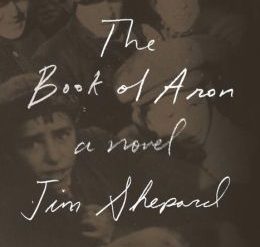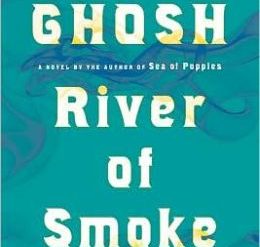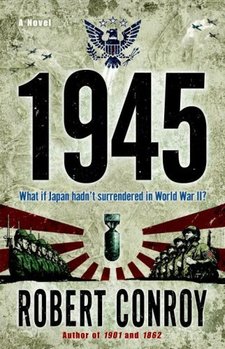
One of the most hotly debated topics in recent American history was Harry Truman’s decision to drop atomic bombs on Hiroshima and Nagasaki. Although many within his administration resisted the action, Truman defended it on the grounds that the bomb would force Japan’s surrender. The likelihood, his military advisers asserted, is that he would save as many as a million US lives that would be lost in an otherwise necessary invasion of the Japanese home islands. Moral qualms aside, Truman proved to have been right. But what if he hadn’t? What if a military coup inside the Japanese leadership had pushed aside Emperor Hirohito and led the country’s already shattered army and navy in a doomed effort to continue the war? What if Japan hadn’t surrendered? That’s the premise of the late Robert Conroy‘s superb alternate WWII history, 1945.
Estimated reading time: 4 minutes
A plausible story
In outline, Conroy’s story is straightforward. Military fanatics kidnap Hirohito and bundle him off to a secret location on the southern island of Kyushu. Meanwhile, the American people, having been promised that Japan would surrender, begin going sour on the war as the draft continues and soldiers are moved from Europe to the Pacific. At the White House, the untested new President finds his advisers divided about manufacturing and dropping more atomic bombs but consents to releasing one on the small city of Kokura.
In fact, the town had been the primary target for the bomb dropped on Nagasaki. There were nearly no sizable targets left after four years of intensive strategic bombing. And the American military gears up for a two-phase invasion of Japan: first, in November 1945, on the southern island of Kyushu, and then months later on the larger island of Honshu, moving across the Kanto Plain toward Tokyo. The Japanese military government sets out to mobilize resistance that, they hope, will cause the Americans so much pain that they will negotiate something less than unconditional surrender.
1945 by Robert Conroy (2007) 450 pages ★★★★★
An alternate WWII history that abounds with boldface names
Conroy is not shy putting words into the mouths of famous people, and as best I can tell he does a skillful job of mimicry. If you’re at all familiar with American history of the era, you’re likely to recognize the key players in the wartime White House, including President Harry Truman, Secretary of State James Byrnes, Army Chief of Staff George Marshall, and Chief of Staff Admiral William Leahy. You’ll also find familiar the senior military leaders running the war in the field: Generals Douglas MacArthur and Omar Bradley and Admirals Chester Nimitz and “Bull” Halsey. Similarly, Conroy imagines the inner workings of the Japanese military establishment, introducing us to Emperor Hirohito, General Korechika Anami, Admiral Teijiro Toyoda, Field Marshal Hajime Sugiyama, and submarine Commander Mochitsura Hashimoto. Presumably, though, Conroy was on less solid ground in reproducing their patterns of speech.
Rapidly shifting scenes from the front lines to the halls of power
Much of the drama in this alternate WWII history unfolds in the corridors of power and involves these well-known figures. However, Conroy brings the tale down to the ground with incisive portrayals of lesser mortals, all of them fictional. They include an American infantry lieutenant, a former Army Air Force captain who escapes from captivity in Japan, and a down-to-earth American brigadier general.
His picture is especially convincing of the man who proves to be the central figure in the tale: a Japanese-American soldier who lost an arm in fighting with the much-decorated 442 in Italy and joins the OSS to spy for the US in Japan. Conroy alternates brief chapters about the evolving roles of these men with vignettes staged in Tokyo and Washington, DC. All together, this is a very satisfying thought experiment about what might well have happened if circumstances in Tokyo in August 1945 had been only slightly different.
About the author
Robert Conroy (1938-2014) wrote sixteen alternate history novels between 1995 and his death in 2014. Four were published posthumously. He had been a community college professor who taught economic and business history.
For related reading
This book is one of the best Books about World War II in the Pacific. And you’ll find it in good company at Great military science fiction.
I’ve reviewed two of Robert Conroy’s other alternate histories of World War II:
- 1942 (What if Japan had finished the job at Pearl Harbor?)
- Red Inferno: 1945 (What if the Cold War had turned hot in 1945?)
I have also reviewed many other novels in the category of alternate history, including alternate WWII history. You’ll find those I liked the most at 10 best alternate history novels reviewed here.
You might also enjoy:
- The 10 best novels about World War II
- 5 top nonfiction books about World War II
- The 10 most consequential events of World War II
And you can always find my most popular reviews, and the most recent ones, on the Home Page.

